Let’s talk beer, people.
Now, I love my alcohol. Margaritas are my favorite cocktail, wine makes me super happy, and I am just now getting to where I really enjoy a good beer.
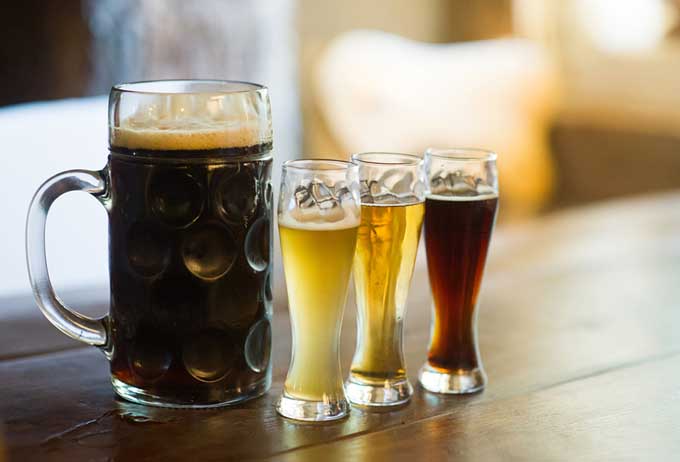
As such, I’ve been educating myself on the different types of beers and, as with most things concerning food or drink (or when paired together), the process has been most enjoyable and edifying for me. The world of beer is much larger than I believed previously, and I thought that some of you might find this information just as interesting as I have.
I’m here today to share it all with you, so sit back and enjoy the ride.
How Do They Make Beer Anyway?
First, I think it’s important to understand the beer-making process. You can make beer with pretty much any type of grain (wheat, rye, oats, millet, etc.), but barley is by far the most common grain that is used.
In order to get the barley ready to ferment, it first goes through a process called malting. The barley is soaked and allowed to begin to sprout.
[the_ad id=”10135″]
Then, to stop the germination process, the grains are roasted. The longer the barley is roasted, the darker the resulting beverage. A drink that is described as “malty” has something of a roasted flavor, with the darker brews possessing more of that malty, roasted flavor.
Once the grains have been roasted, they are ready to be made into beer. The first step is to soak the barley in hot water, sort of how you would steep tea leaves. After soaking for an hour, the malted barley creates a sticky, sweet liquid where all the sugar from the grains has been released.
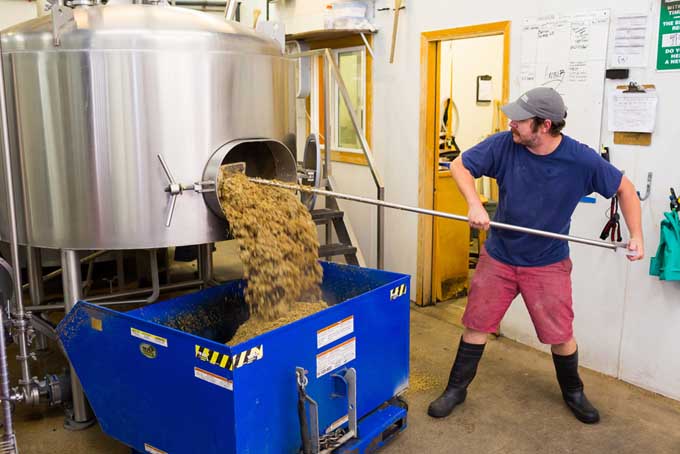
This is called wort. The wort is then boiled for an hour, cooled, strained, and filtered. Finally, the wort is then combined with yeast in a container for the fermentation process to occur. The yeast eats up all of the sugar, which produces CO2 and alcohol, forming a liquid that is better known as beer.
Ale vs. Lager
Now, beer is divided into one of two categories, based on the fermentation process that is used. Ales are made when the yeast is on the top of the fermentation vessel. Lagers are the result of the yeast doing its work from the bottom of the vessel.
Furthermore, ales are stored at room temperature for no more than two weeks, normally around 7-8 days. Lagers are allowed to ferment for several weeks at around 34°F. The warmer, shorter fermentation period produces byproducts called esters – flowery or fruity aromas that people typically associate with an ale, such as apple, pear, hay or grass.
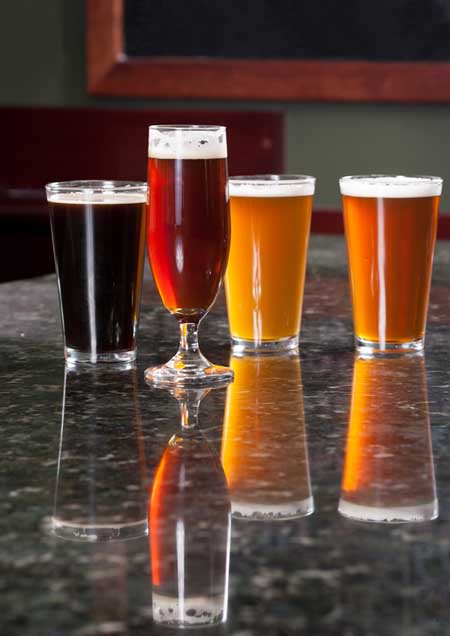
The colder processing period for making a lager releases much less of these byproducts, allowing the other flavors to shine through better.
Why Do They Say Beer Is Hoppy?
Other than the malty flavor from the barley, the main flavor component comes from the hops. Hops are the seed cones from a plant with the same name.
Originally added to the beer as a preservative, the bitterness of the hops flower is used to cut the sweetness remaining from the sugar that the grains release during the steeping and boiling phases.
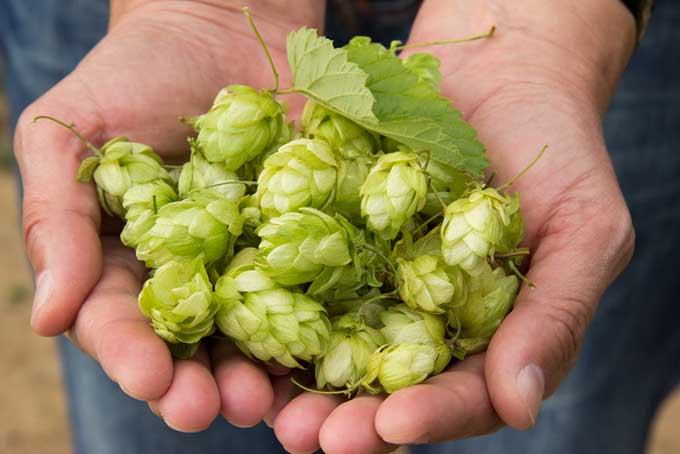
Typically, when you hear someone describe a beer as “hoppy,” you think “bitter.” This is not technically true in all cases, though. While hops added early in the boiling process will create a bitter flavor, adding it later, after boiling, results in little to no bitterness at all.
Any beer with a citrus-like flavor generally has a good amount of hops in it, and it doesn’t necessarily have any bitter component.
[the_ad id=”10138″]
So, that’s how you make beer. What about all the different varieties, though?
As I stated earlier, there are really only two categories of beer: ale and lager. All the other types of beer are just subcategories of one of those two.
Before I began reading on the subject, I erroneously believed that stout (like my beloved Guinness) and pilsner were two independent categories of beer. It turns out that stout is just a type of ale where the barley has been roasted the longest, resulting in the darkest type of ale, and a pilsner is a type of lager.
Now, there are far too many styles to mention here, 80+ actually. I do want to go over a few of the more popular styles of ales and lagers you’ll find, though, and give you some examples to try for yourself.
Ale Styles
American Amber/Red Ale
This is an easy style to drink. It’s a well-balanced beer that focuses more on the malts, giving it a nice roasted flavor, though it typically has a good amount of hops as well, giving it a fruity or citrus note.
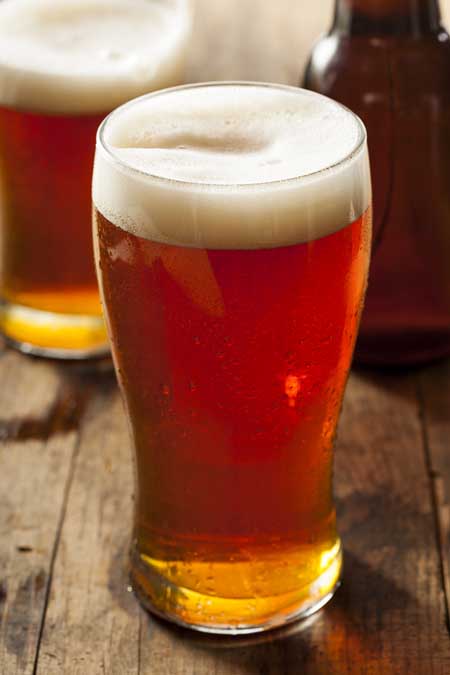
These can range anywhere from light amber to a dark reddish color. Sam Adams makes an amber ale called Mighty Oak, and recently I’ve noticed that New Belgium’s Fat Tire Amber Ale is everywhere.
English Pale Ale
This is your typical English pub ale. This ale can range from a light golden hue to a reddish amber color, and they all seem to have a nice mix of hoppy and malty flavors, making this a really easy brew to drink. The English breweries Fuller’s, London Pride, and Boddington’s all make a version of this classic ale.
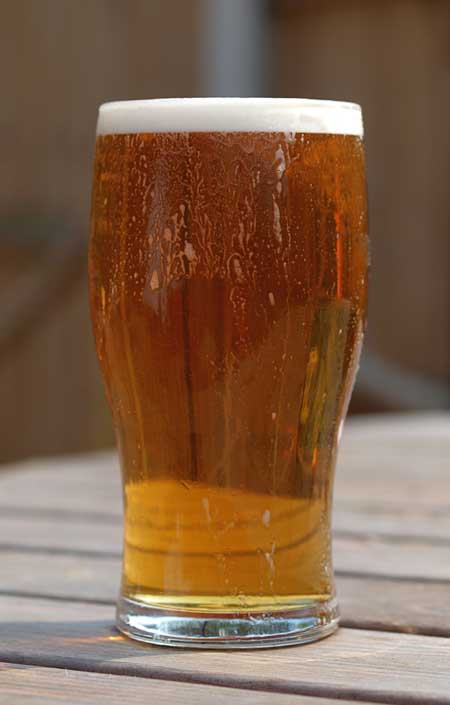
Plenty of American breweries also make a pale ale in the English manner, with the only difference being that English pale ales use English ingredients, and the American versions use American ingredients, slightly altering the flavor profile.
IPA (India Pale Ale)
IPAs are typically pretty bitter, with some breweries adding more hops at the end of the brewing process to give a stronger hops flavor with no added bitterness. They are all pretty light in color as well. There are three distinct types: English, American, and Imperial.
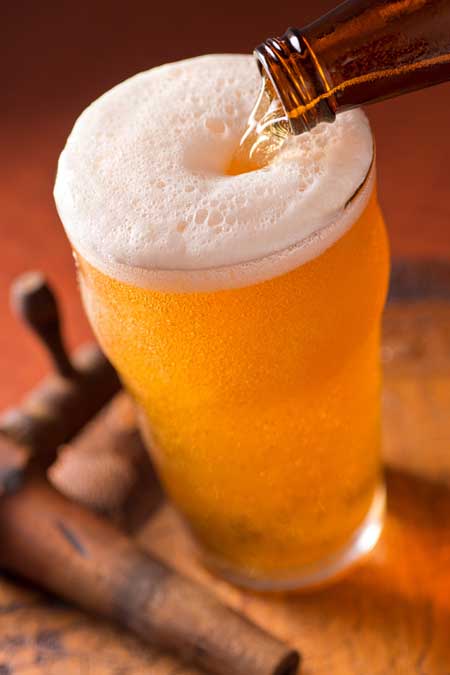
The English and American IPAs are pretty similar, with the English being slightly nuttier and darker, and the American normally being lighter and stronger in flavor. An Imperial or Double IPA will have the strongest and most bitter flavor.
For an original English IPA flavor, try Samuel Smith’s Old Brewery India Pale Ale. Bell’s Brewery Two Hearted Ale is a great American version. 90 Minute IPA from Dogfish Head Brewery is a great example of a Double IPA.
Brown Ale
A brown ale is typically my second choice, if Guinness is unavailable. These ales are pretty malty and sometimes can even have a nutty flavor, which I love. They also usually end up on the sweeter side, and may even have a bit of a fruity flavor as well. In color, these they can range from red to dark brown.
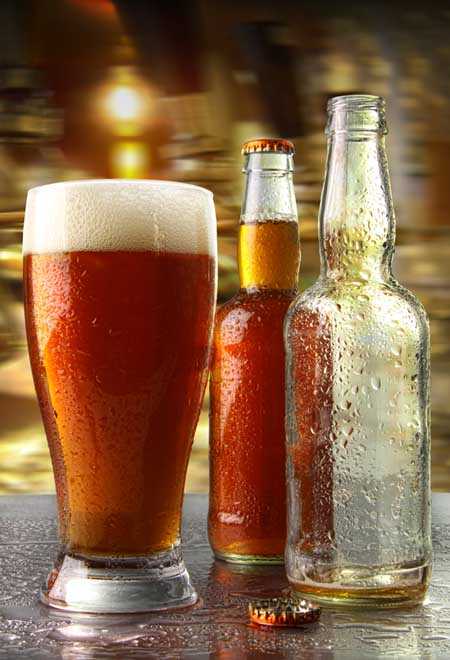
Just as with pale ale, the American version only differs in that is it made with American ingredients. Newcastle Brown is a very popular option in this style.
Stouts
I freely admit that a stout is by far my favorite type of beer to drink. Guinness was the first one that I had that I immediately enjoyed. I was so surprised to experience an aftertaste after that first sip with flavors of toffee and chocolate. It was delicious! Now I know that comes from the darkly roasted barley. It’s amazing!
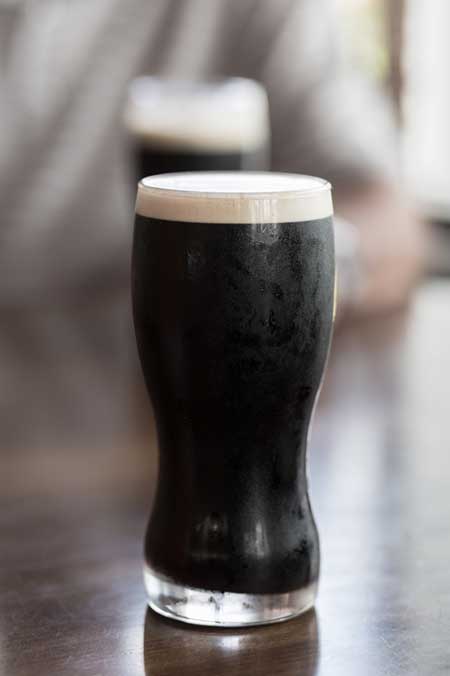
The main difference between the Irish stouts, like Guinness, and the English stouts is that the Irish variety has a creaminess to it which the English ones lack. That creaminess is something else that I really enjoy.
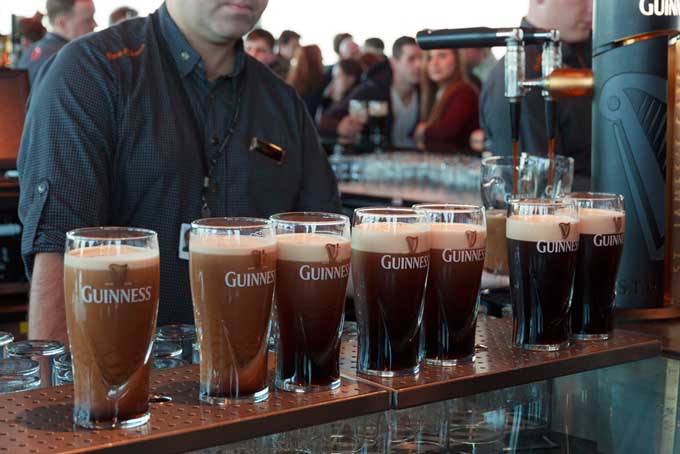
Just know that if you’re drinking a really dark brown or black brew, you are more than likely drinking a stout. There are some really dark lagers out there, mostly German, but they aren’t nearly as common.
Of course, I’m going to tell you that you must try Guinness, but Rogue Chocolate Stout is a yummy American version of the Irish style, and Innis & Gunn Irish Whiskey Aged Stout is a wonderful English version.
Lager Styles
American Adjunct Lagers
For some reason, this style is by far the most popular in the United States, and for the life of me, I cannot understand why. These lagers are pale, light-bodied, fizzy and, as far as I’m concerned, they are all extremely lacking in flavor.
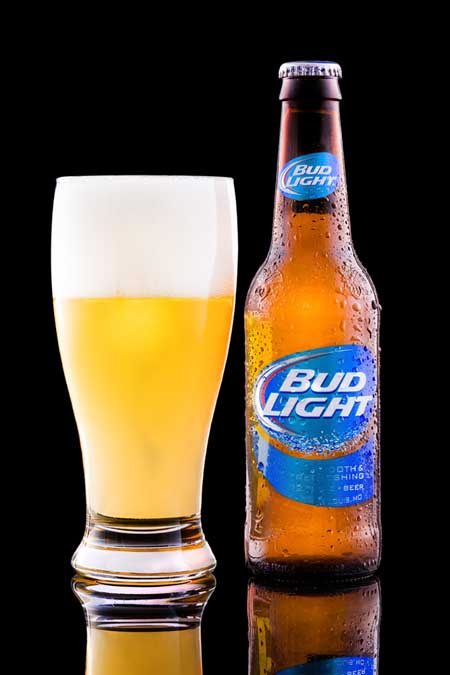
The focus is more on mass-production and making as much profit as possible, rather than on making a full-flavored and tasty beer.
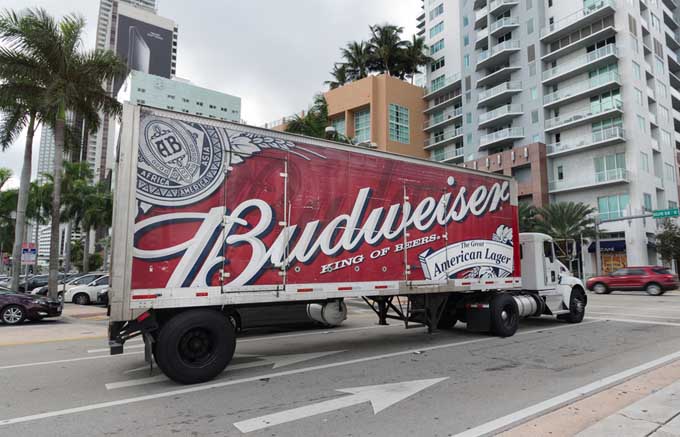
The macro-breweries that produce this style of lager will even sometimes cut the barley with corn or rye to save on cost, which further impacts the flavor. Budweiser, Miller High Life, Coors, Dos Equis, and Corona Extra are all examples of this style, as well as their light counterparts.
Of these, the Mexican-made Corona and Dos Equis both have more flavor than the American-made versions.
Czech Pilsener
The original pilsner lager, the Czech Pilsener originated in Pilsen, an ancient city in the western half of the Czech Republic. First brewed in the 1840s, this hoppy lager typically has a good amount of bitterness to it, as well as a bit of a bite from some underlying spicy notes.
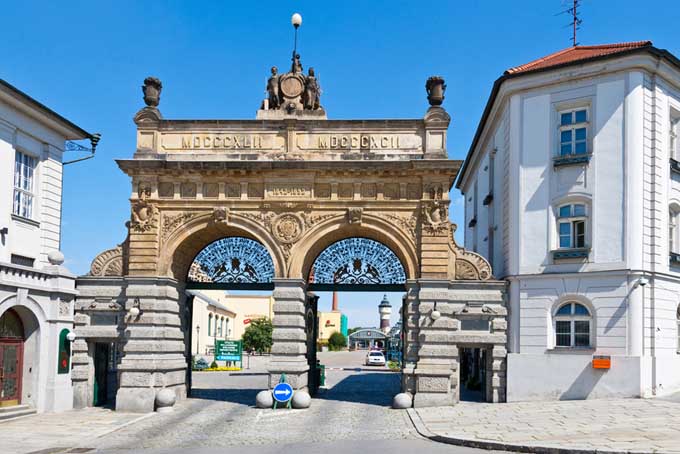
It’s a very crisp and refreshing drink, often with a grassy taste to it. This pilsner ranges from a light straw to a golden color. Sam Adams Noble Pils is a good example of this style that’s also easy to find, as is the Sierra Nevada Summerfest Lager.
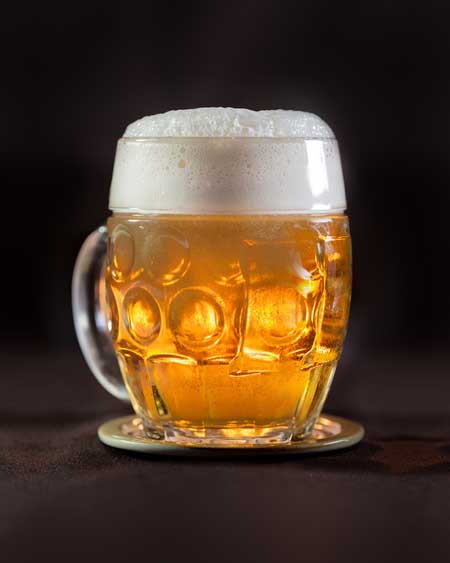
However, if you have access to a large variety of imports, try looking for a Czech Pilsener from the country of origin, like Pilsner Urquell a.k.a. Plzeňský Prazdroj from the brewery of the same name. As with many craft beers from Europe, special mugs are even made for their consumption.
Euro Pale Lagers
Next to the American Adjunct styles, I would venture to say that Euro Pale Lagers are the most popular beer of choice for many Americans. When the Czech Pilsener started becoming wildly popular in the 1800s, other countries felt the need to create their own lagers that would be comparable to the Czech version.

The Euro Pale Lagers all fall into this category. Most of these are pretty hoppy without too much bitterness, and they have a good malt flavor as well, so they are well-balanced brews. You will find these produced all throughout Europe, and worldwide popularity means they are fairly easy to find pretty much anywhere.
Some of the most common examples are Stella Artois from Belgium, Heineken from The Netherlands, and Harp Lager from Ireland.
Bocks
A great German beer, bocks have been around since at least the Middle Ages and perhaps even as far back as pre-Christian times. One story tells us that this strong beer was first brewed in monasteries to sustain the monks during their Lenten fasting, Einbeck being the location of one of these monasteries.
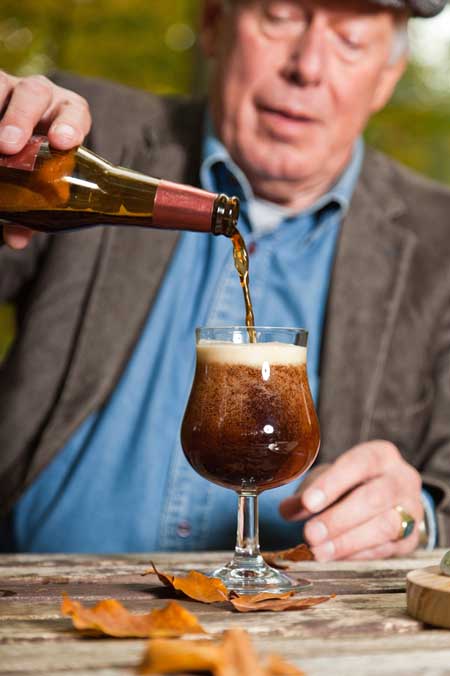
It could be that the name was shortened to “beck,” which over time became “bock.” Another possibility is that this type of lager was brewed by pagans during the time of the sign of Capricorn, the goat. This would explain why many bock lagers have a goat emblem associated with them.
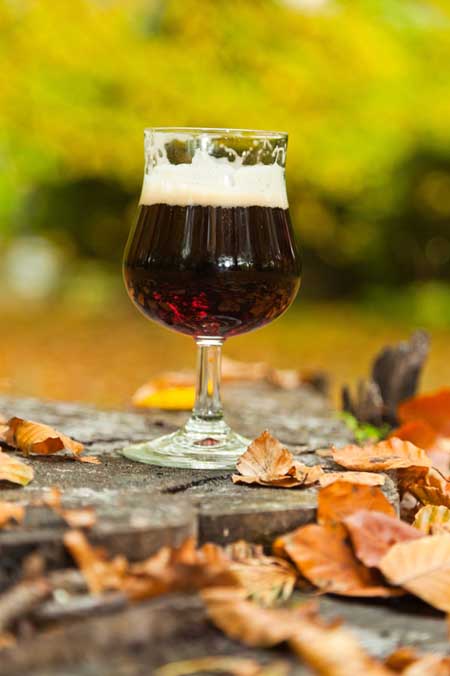
Bocks are stronger than the typical lager, which I like, with more of a malty flavor than many lagers, plus they’re lighter on the hops. They are also darker in color, ranging from dark amber to a true brown. Sam Adams Winter Lager is a great example of this type of beer, as is Shiner Bock from Spoetzl Brewery.
Oktoberfest Lager
I had to include this style because I love the whole Oktoberfest celebration time. Autumn is my favorite season, and any and all fall-related activities make me happy. Oktoberfest beers originated when, prior to refrigeration, beer-making could not happen in the summer months because it was simply too hot.
So, beers that were brewed in the spring were kept in cold storage over the summer months and were ready to drink in the early fall, when beer-brewing as well as wine-making could start back up again. These two activities together were great cause for celebration. Hence, we now have Oktoberfest.
These lagers are full-bodied, with a good roasted flavor from the malt and only a mild hops flavor. Generally they will be either brown or copper in color. They all tend to have a little higher alcohol content than other lagers as well, so keep that in mind.
Sam Adams Oktoberfest is a delicious example of this style, and it’s also pretty widely available. Paulaner Oktoberfest is a true German option, as is Ayinger Oktoberfest, though these may be a little harder to find.
Like to celebrate with some German flare? Check out Foodal’s Guide to German Bowle Drinks for more Oktoberfest inspiration.
In Closing
There you have it, then. As I mentioned previously, there are many, many other styles of beer to choose from (I didn’t even include Pumpkin Ale, which is autumnal yumminess at its best), but I feel like the ones covered here are the most widely consumed.
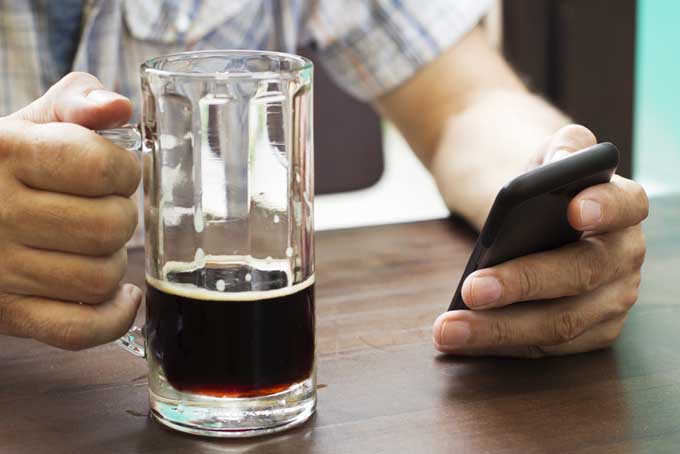
If you have been a reluctant beer drinker in the past, you – like myself – may have been scarred by a style that is not really your style.
[the_ad id=”10139″]
My first beer experience was a Bud Light, and I was totally disgusted. I wouldn’t even touch a beer for years afterwards. Had I known then that I need a lot more maltiness in my beer, I would never even have attempted to drink that.
So, if you have this notion that you’re not a beer fan, you probably just haven’t tasted the right style yet. Don’t be afraid to experiment. I’d recommend visiting a bar that has tons of options on tap, so you can taste a few different types to find one that appeals to your taste buds. Enjoy!
About Ashley Martell
Ashley has enjoyed creative writing since she was six years old, when she wrote her first short story. She majored in English literature at the University of Montevallo. After years of professional work, she is now a stay-at-home mom of three, who uses her craft to write about her life and adventures in and out of the kitchen.

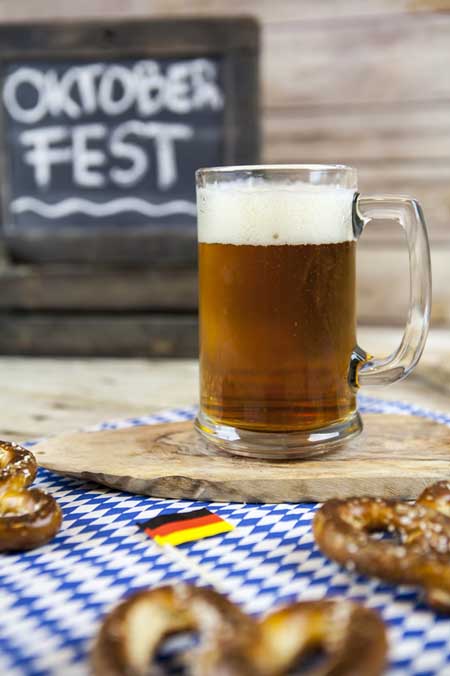
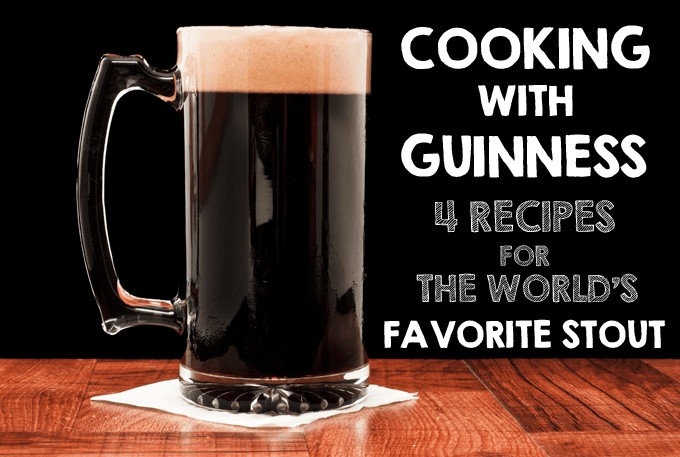

This is a really nice guide. I’ll take a glass of Guinness, please, while I go back and reread. My husband just started getting into craft beers, so he’s been learning lots about the different types. I’ll have to familiarize myself with your guide and impress him by knowing what he’s talking about.
I think I mainly like Guinness because it tastes like coffee to me, but I do like many other beers as well. I’ve even been known to drink a cheap old lager on occasion, if it’s ice cold, but like you said, I have no idea why this type seems to be favored above all the other wonderful choices.
Guinness does taste like coffee! And chocolate! And maybe a little like toffee? It is the absolute best.
I am not a beer drinker but i still find this interesting. I tried it and i just didnt like it. But that was also just a regular can of beer. If i tried a different kind i might like it. I ways wanted to try a fruity kind but have not got around to doing so. I do not really drink so that may be why.
It’s funny you should say that. I’ve always liked it, but my husband never really did. Yet, he’s the one that’s so into now. I’m not that picky about it, as long as it’s ice cold. He doesn’t like any of the common ones. I used to be able to get him to drink an imported one on occasion, but he mostly shied away from it. Until craft beer sparked his interest.
So, yes, you may very well like a higher quality one (and not in a can).
I’m a big fan of porters and stouts myself, though I’ll drink much lighter types of beer, too. The only thing I can’t stand is IPA options. India Pale Ales are disgusting as far as I’m concerned because I find that bitterness un-stomachable!
A good IPA goes really well with Indian food. The bitterness and spicyness work really well together, and for me, certain styles of beer really only work when you are drinking them with the right food. You might want to take a look at my article on beer and food pairings to see what I mean.
I don’t drink beer often, but I’ve tried a few that I’ve liked. Plus one of my favorite authors wrote a children’s book all about how beer is made, haha. I can definitely say Euro pale lagers are super popular here; they’re not my favorite, but I can drink a Stella and enjoy it well enough. I generally prefer ales, especially stouts. I have to try bock someday, though, especially given that my sun sign may be involved 😉
I’m not a beer drinker but whenever I buy a round for friends and they ask me what I want I get stumped at the bar and pick a name I know. I used to work as a hostess and never knew the difference between a lager and ale and the customers found it amusing.
It’s important to know if you have guests so you can get the right kind of beer in or at least when buying someone a beverage know what is good. I never knew a proper Guinness takes about 10 minutes to pour at least until I yelled at barman and my friend told me it’s a sign of a good pint
Excellent. This was the most clear description of the beer making process I have ever read. It wasn’t too complicated or too simplified. Thank you!
Glad you liked it!
It is really interesting that you have come to enjoy beer after diving more into the complex world of craft brewing. In my experience, I have found that most people who dislike the beverage based on typically american lagers tend to dislike craft examples even more. It’s refreshing to hear that you have found a love of beers by branching out!
American lagers don’t taste like anything. I need some flavor in my beer!
I’m an American, and I’ve always wondered why Budweiser, Miller, and similar beers were so popular here, While the rest of the Western world turned their nose up to them in favor of some of the other adult beverages mentioned in this article. I figured it had something to do with selling more. It may just be cultural conditioning, but even though I do enjoy having some of the other beverages occasionally, I still prefer having a good ole “American Adjunct Lager” when cooking out with friends and family!
This was a really informative article! I didn’t know that there were really only two “genres” of beer, with all the others being subsets of those. I’m still new to drinking, and as such, I’ll try nearly anything. I recently picked up a variety that is labeled as a “Quadruple ale”, which interested me. It has a whopping 9.8% ABV and I’m going to try it this weekend.
While I’m not very fond of the American Lagers, they are quite abundant which makes them popular among the younger crowd, like me and my friends.
It’s no surprise that homebrewing has become ever more popular. Most of the big beer producing brands have lost their connection to their roots. It’s become some what of a sterile affair and just as long as it’s yellow, foamy on the top and has some alcohol, then for them at least, it’s beer.
But a good brew is more then that, there is such a wide variety of styles that there is a type for everyone. If you have a chance to try an artisanal beverage you will taste for yourself.
For the majority of people most lagers taste the same and lager drinkers may have 3 or 4 go to brands depending on where they are drinking as not all establishments stock the same brands. Aspects such as taste and texture become more important when you are drinking ales, bitters and of course stouts. It’s no coincidence that more mature drinkers often favour the latter options.
Your second sentence pretty much describes me to a “T.” A lot has changed since I first read this though, as I have had the opportunity to experience a much wider range of these beverages. We even went on a tasting tour, and let me tell ya, that’s a lot of fun (not to mention tasty!).
There is so much variety. I can’t wait to go again. My husband is now fond of a particular porter, but he is also open to new experiences.
There are many people all around the world who really are interested on making their own beer, but not everybody can do it the proper way. Brewing is an art that is quite difficult to dominate, that’s what makes beer so special. Thank you for sharing this!
Good timing as I have just started to get involved with this hobby. From what I have been reading, the process is easy to complete, but difficult to master and you will have many failed batches and exploded battles before you are a brewmaster. I started recently just making ginger beer, which isn´t really beer since it is non-alcoholic ( which in my eyes disqualifies it from being called a beer. But the results were decent.
Thanks for being sober enough to write this guide.
We do our best. 😉